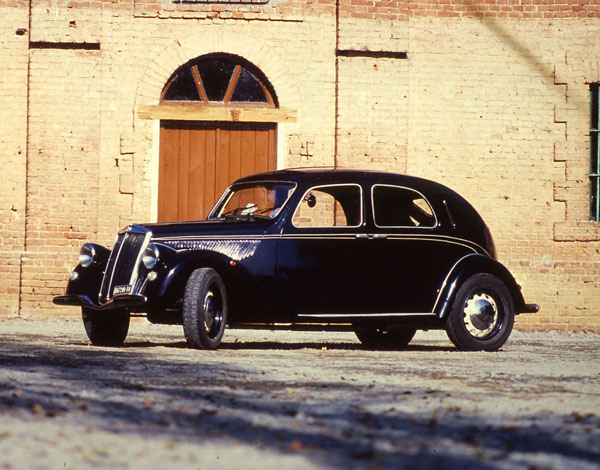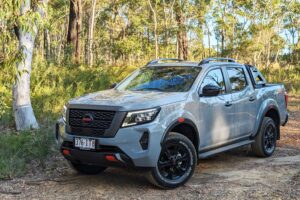
Vincenzo Lancia’s last car, the innovative Aprilia of 1937-1950, appeared a few weeks after his sudden death at the age of 55. Its aluminium V4 engine, of 1.35 litres and, from 1939, 1.5 litres, with a chain driven overhead camshaft, gave a top speed of 128 km/h. The rear as well as the front wheels had independent suspension. Quite an innovation was the pillarless streamlined four-door saloon body which was followed later by a Zagato designed and built Spyder or sports roadster.
When Lancia began thinking of the Aprilia, the Augusta was in full production and enjoying great success. But, to a certain extent, it was a classic type car and, as the magnificence of the Lambda was still in Vincenzo Lancia’s mind he thought, quite rightly, that people were ready for a revolutionary, bold and once again more conventional car. Vincenzo drew up his wish list which included a light streamlined body shape powered by an engine of displacement somewhere between the 1200 cc of the Augusta and 1500 cc. The main qualities of such a car were to be very good acceleration and stability in a five-seater saloon which weighed no more than 900kg.
The V4 engine had spherical combustion chambers with displacement of 1351 cc. The cylinder block was of aluminium with inserted cast iron liners and on the test bench the first prototype developed 36 kW at 4300 rpm. Work being carried out at Turin Polytechnic on aerodynamics to enable faster, less powerful cars to be built indicated that the shape of the tail of a car had a determining influence on the run off of the airstream, resulting on this having a strong influence on the shape of the new car. The body featured a rigid unitary construction.
The Lancia classic front suspension with its coil springs protected by vertical sleeves which integrated the shock absorbers was kept, but included the interesting addition of an oil reservoir to secure a constant oil supply to the two suspension elements. A new rear wheel suspension was also developed. This was rather complex comprising a rear propelling unit, two axle shafts floating by means of swinging arms, two transverse torsion bars and a transverse leaf spring. The system was completed by two shock absorbers. Hydraulic brakes were standard.
When the first Aprilias appeared they were initially received with skepticism due to their advanced engineering, but the Aprilia, with its good acceleration, excellent road holding and a gear box which had a top speed of 85 km/h in third gear and 125 km/h in top the car soon became queen of the road. As soon as sports customers used it in races it outshone its competitors in the 1500 cc class.








